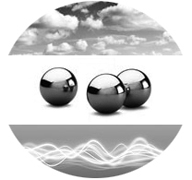Gateway to the Best Science News Sources
Our editors' picks for the top 3 news sources in each category:
|
|
Noise Pollution: Many Nuisances, a Few Solutions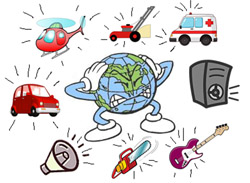
If both individuals and authorities increasingly pay attention to the levels of air pollution in urban areas, another form of pollution gets very little consideration: noise. The Environmental Protection Agency has reported that nearly half the U.S. population was exposed to traffic noise high enough to be harmful[1]. Because the health consequences of noise pollution are more insidious than those brought about by chemical pollution, few local or governmental institutions take them seriously, and the existing laws, such as noise ordinances, are rarely enforced. This article will deal primarily with unwanted noise. It will only address briefly the impact of willing exposure to excessive sound levels, as might occur when listening to personal audio devices or by attending public concerts. Sources of Noise PollutionRoad traffic noise is the most cited sound-related nuisance among city dwellers. It used to affect primarily residents living closer to busy roads, but the proliferation of loud mufflers and overpowered car stereos has spread the problem all the way into the most protected, cul-de-sac suburban neighborhoods. These after-market devices can easily blast past the 100-decibel barrier, twice the level determined by the Environmental Protection Agency as safe for the general population. Even though they violate city noise ordinances at every outing, the owners of these noise machines are very seldom fined. A cultural tolerance to Nascar-inspired vehicles, combined with the fact that police officers are usually not equipped with sound-measuring equipment, result in authorities overlooking the problem entirely. Loud stereos or TVs with enhanced bass systems whose sound travels through walls as it does through air are also at the root of the most common complain of residents in apartment complexes and poorly soundproofed townhomes. Apartment dwellers may apply a greater level tolerance to neighbors' boisterous parties or rowdy child play, as these annoyances are usually viewed as occasional or short-lived, whereas noise from a stereo or a TV can last for hours, day in and day out. 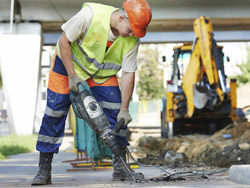
Construction noise, with its cohort of heavy equipment and loud trucks, can turn the quietest suburban neighborhood into a raging industrial zone. It does, however, come with several extenuating circumstances. It is usually perceived as a necessary evil, as it is aimed at developing the neighborhood and will often increase property value for the existing residential owners. Construction work usually stops in late afternoon, allowing neighboring dwellers to enjoy a quiet evening at home and a good night rest. Airports, railroads, and highways are as necessary as they are noisy. Even the best home soundproofing strategies will have a hard time mitigating their racket. The only silver lining is that, in most cases, the activity of these transportation systems will be lighter at nighttime. Occupational noise is as prevalent in some industries as it is unavoidable. Hearing loss resulting from such noise is the world's leading occupational disease [2] and the Centers for Disease Control report that about 24% of the hearing difficulty among U.S. workers is caused by occupational exposure to excessive sound levels. The grinding machine of a metal worker, the logger's chainsaw, or the truck driver's engine will damage their users' hearing a little more every day. The use of protective equipment has become widespread, but lack of compliance and cheaper protective devices provided by many employers translate to incomplete protection. 
Nature's sounds, as hard as it may be to conceive, have been the target of an increasing number of arguments between neighbors. Lifestyles clash as urban sprawl and the invasion of rural areas by telecommuters produces more and more forced interfaces between city slickers and rural residents. The roaring tractor in the field on the other side of the backyard fence, or the all-night croaking performance of the bullfrogs in the neighbor's pond can be perceived as unacceptable nuisances to countryside newcomers who had expected a virgin sound environment. An epic row between forced neighbors in the French countryside over Marcel, a rowdy rooster, has even led the country to pass a law sanctifying some of nature's sounds and preventing lawsuits against them. Health Effects of Noise PollutionHearing loss is the best-established and most dramatic health consequence of noise pollution. It will affect primarily those exposed to very loud sounds for extended periods of time, willingly (recreational) or unwillingly (occupational). The young woman who spends hours on end blasting hip-hop music in her earphones and the bulldozer operator will soon have a great difficulty understanding each other, even when they end up spending a weekend in the quiet atmosphere of a mountain cabin. 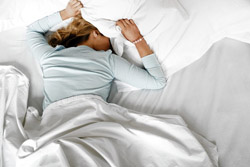
Sleep deprivation is perhaps the most insidious and disturbing consequence of exposure to unwanted noise. The otherwise sound sleeper may toss and turn for hours at night, struggling to ignore the pounding of the neighbor's stereo on the other side of the wall. The light sleeper may be awakened ten times a night by the roaring of a loud muffler on the nearby street. Chronic sleep deprivation has been associated with a wide range of physiological and mental ailments. Mental and physiological stress resulting from unwanted noise exposure have become better understood over the last decade. Behind the legitimate irritation of the telecommuter whose apartment is flooded at all hours of the day with the barking of the neighbor's dog lie actual physiological disturbances. The noise stimulus will trigger the body's flight-or-fight response. Stress hormone levels will rise to activate a cascade of events that will lead to inflammatory and oxidative processes similar to the ones triggered by the assaults on the body of toxins or infectious agents[3]. The repetition of these adverse events will eventually translate to high blood pressure, plaque build-up in the arteries, obesity, and diabetes. Loss of concentration and reduced productivity are common symptoms in individuals who suffer from a noisy environment. This is particularly bothersome for children trying to do their homework, telecommuters with a home office, or professionals who have to complete their workday in the evening at home. Electroencephalographic studies have established that noise disrupts brain activity patterns that foster concentration. This phenomenon is further enhanced in creative personalities, who tend to have a harder type filtering out noise. It may also prevent many personality types from immersing into a good book or a classical concert. 
The sentiment of personal space violation is one of the most commonly overlooked consequences of exposure to unwanted noise, even though it is a source of great distress for the victims. The sense of personal space is simply an extension of the territorial behavior observed in most animals. A perceived violation of one's territory, such as an apartment, is likely to trigger a fight-or-flight response. Because of this, the auditory invasion of one's space by, say, a neighbor's loud TV, might trigger elevated stress responses, which themselves translate to anxiety or aggravation, depending on the personality type of the person affected. Such emotional instability can lead to extreme reactions and reports of shootings by tenants exasperated by their neighbor's noise abound in newspapers. Since people vary greatly in their conception of personal space, one might sleep peacefully just above a busy bar while another will be riled up by a toddler's footsteps on the floor above his head. A Few Solutions to Mitigate Noise Pollution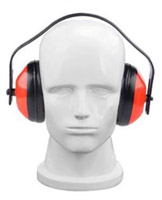
Anti-noise headsets constitute a good, economical solution for workers exposed to occupational noise for hours every day. If the manufacturing quality of the headset matters, the most important selection factor should be the noise reduction rating of the device. The efficiency of an anti-noise headset might be increased by using it in combination with earplugs (the silicon-based ones typically provide a higher protection). Good anti-noise headsets are available for as low as $20, but keep in mind that these only reduce noise levels, they do not cancel the noise. Noise-canceling headphones are less suited to the workplace, as they reduce ambient sounds to a higher degree and may prevent workers from communicating with colleagues or from identifying potential hazards near them. They are ideal for recreational use at home, in the train, or in a plane, and are particularly suited to listening to music or audio programs in a noisy setting. The noise cancellation technology has made great strides in the past two decades and higher end headsets can offer their users an impressive level of sound insulation. Their performance, however, remains limited when dealing with sudden or intermittent sounds. A good noise-canceling headset will effectively block the constant roar of the nearby highway, but will not react fast enough to prevent the sudden honking of a vehicle from making it to your eardrum. A decent set of noise-canceling headphones will require an investment of at least $100, while top-of-the-shelf devices will reach into the thousands. 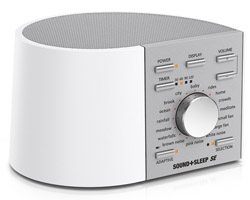
Noise canceling machines are intended for indoor use and designed suppress external sounds. They are particularly effective against low to medium-frequency noise. These machines will not shield you from the loudest sounds as well as headphones, but they are suited to wipe off moderate ambient noise, they do not require wearing a headset, and they are cheaper than noise-canceling headphones. The cheapest versions of these devices (as low as $20) produce a white noise that drowns other sounds. More advanced ones (starting around $50) use active sound canceling technology similar to that found in headphones. When portable, these machines can even be used in cars to smother traffic noise but they might interfere with your ability to listen to the radio and to hear external acoustic warnings such as the roaring of the truck tailgating you. Home soundproofing is obviously the costliest and most involved approach to keeping unwanted racket at bay. From double-pane windows to mass-loaded wall covering and floor/ceiling sound insulation, a variety of solutions are commercially available, but will require a significant investment in materials and specialized labor. An added benefit is that most soundproofing procedures will also increase the energy efficiency of your home. However, before resorting to such an extreme, you might want to research negotiation tactics when dealing with a noisy neighbor, one of which is to bring them into your apartment so they can appreciate first-hand how their TV soundbar propels the sound through the wall and into your bedroom. Sound Spreading: A Noisy, Open-Ended IssueAlthough the health consequences of exposure to excessive or unwanted noise are increasingly well documented, society still dismisses noise pollution as a necessary evil, especially in urban environments. Technology does offer a handful of solutions that you can leverage today to mitigate the problem, but it remains in great part ubiquitous and unresolved. More lobbying around this pain point will be needed to prompt public authorities to tackle the problem and encourage research on new approaches to harness sound spreading. ReferencesPublication date: May 26, 2021 |
|
|
|
|
Copyright© 1997-2021 Guy Orgambide |

